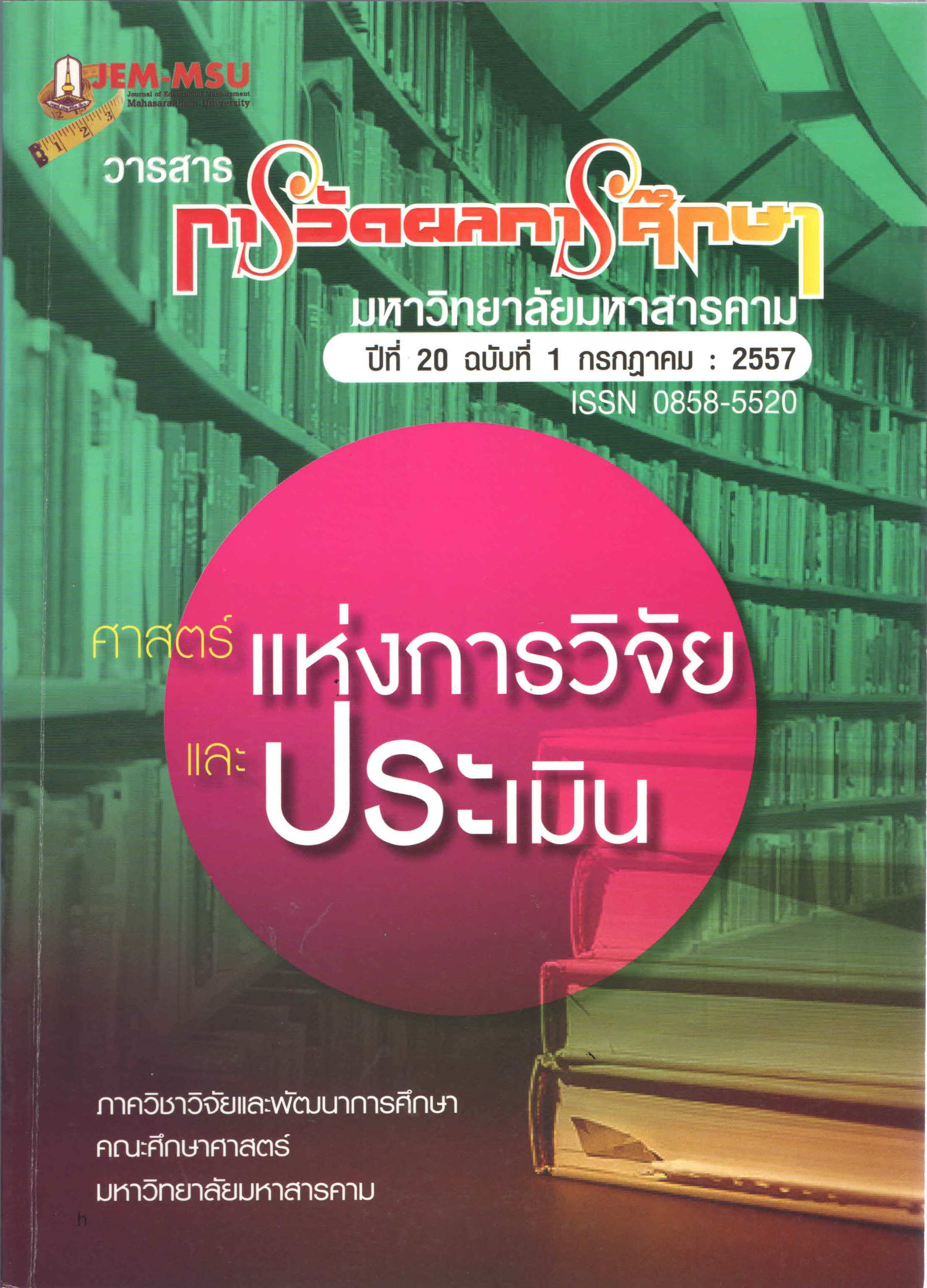Construction of Mathematics Diagnostic Test on Relations and Functions for Mattayomsuksa 4 Students
Main Article Content
Abstract
Diagnostic test is a machine that search for learning disabilities and ability
of the students. The results of diagnostic can use for learning of the students. As
well as improvement teaching methods of the teacher. This study aimed to
construction of mathematics diagnostic test on Relations and Functions for
Mattayomsuksa 4 students. The samples used in test construction consisted of
600 Mattayomsuksa 4 students from 19 schools under the Secondary schools in
the Buriram Province 2012, obtained using the multi-stage random sampling
technique. The instruments used for collecting data were 5 choice diagnostic tests.
The three constructed tests, 20 items each were : test of Relations, test of
Functions and test of Type of Functions. These tests were constructed from
constructing the tests for surveying a fill – in – the – answer type with 60 items
and showing the solution type with 30 items which were in accordance with the
learning objectives. These constructed tests were tried out 3 times the first and
second times were for improving and screening the test items by finding the
difficulties and discriminating powers while the third time was for finding out
qualities of the tests by finding the difficulties, discriminating powers and a
reliability.
The results of the study were as follows:
The first testing
Test 1 consisted of 30 items with difficulties ranging from .11 - .69
and discriminating powers ranging from .01 - .81
Test 2 consisted of 30 items with difficulties ranging from .07 - .70
and discriminating powers ranging from .07 - .95
Test 3 consisted of 30 items with difficulties ranging from .02 - .67
and discriminating powers ranging from .04 - .89
The second testing
Test 1 consisted of 30 items with difficulties ranging from .38 - .80
and discriminating powers ranging from .25 - .54
Test 2 consisted of 30 items with difficulties ranging from .44 - .84
and discriminating powers ranging from .39 - .70
Test 3 consisted of 30 items with difficulties ranging from .35 - .79
and discriminating powers ranging from .31 - .60 The third testing
Test 1 consisted of 20 items with difficulties ranging from .36 - .77,
discriminating powers ranging from .20 - .68, and a reliability of .76
Test 2 consisted of 20 items with difficulties ranging from .43 - .71,
discriminating powers ranging from .35 - .67, and a reliability of .64
Test 3 consisted of 20 items with difficulties ranging from .29 - .45,
discriminating powers ranging from .28 - .76, and a reliability of .70
For content validities by having experts consider congruence between
items and objective had congruence indices ranging 0.60-1.00.
In conclusion, diagnostic test of mathematics had qualities as required.
Teachers could use them for testing to find weakness in mathematics learning
entitled Relations and Functions of Mattayomsuksa 4 students.
Article Details
The content and information contained in the published article in the Journal of Educational Measurement Mahasarakham University represent the opinions and responsibilities of the authors directly. The editorial board of the journal is not necessarily in agreement with or responsible for any of the content.
The articles, data, content, images, etc. that have been published in the Journal of Educational Measurement Mahasarakham University are copyrighted by the journal. If any individual or organization wishes to reproduce or perform any actions involving the entirety or any part of the content, they must obtain written permission from the Journal of Educational Measurement Mahasarakham University.


